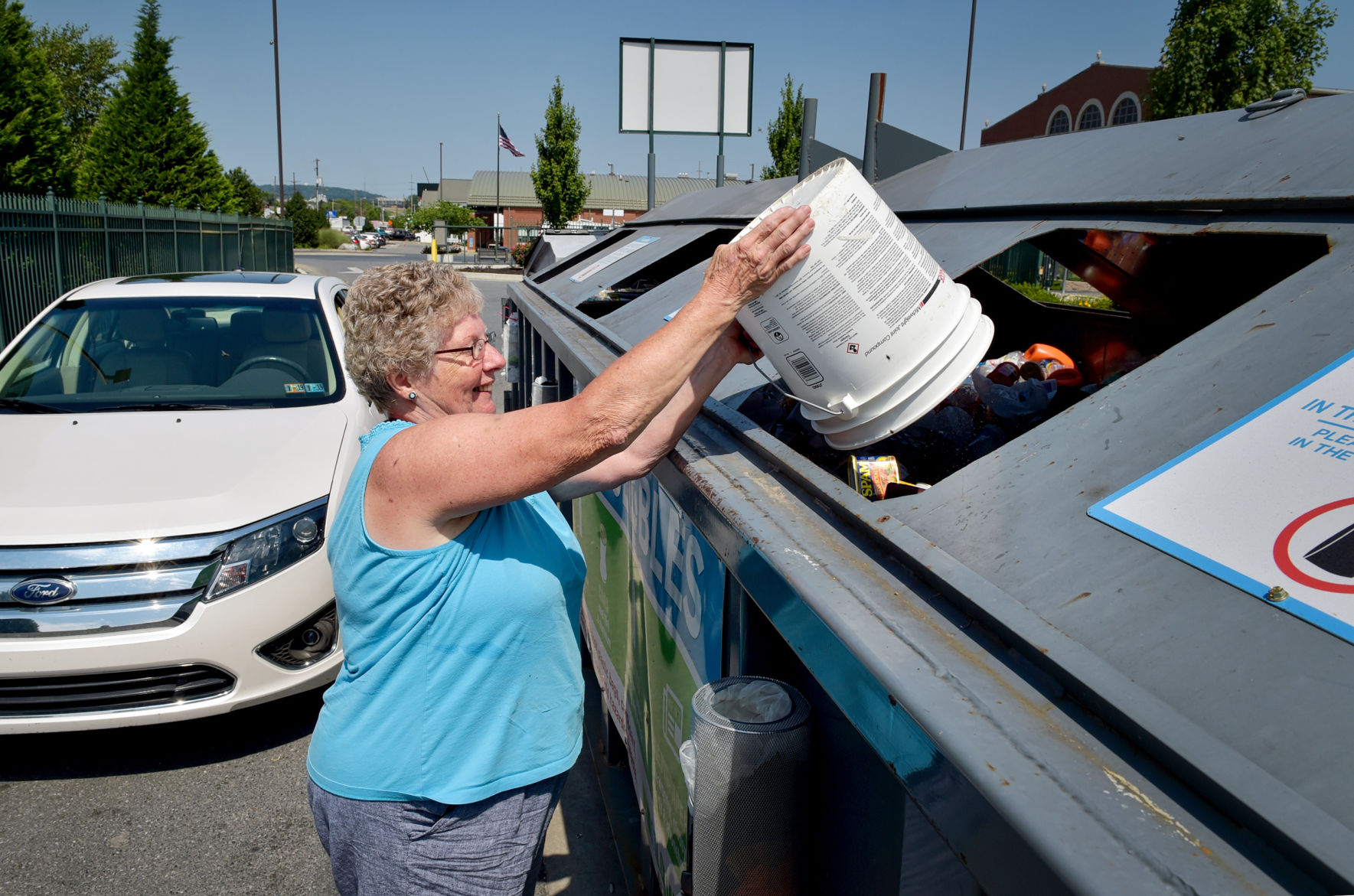LCSWMA trims recycling program to the 'Big Four,' cites market collapse
Original Article by Ad Crable | Staff Writer, Lancaster Online Jul 15, 2018

Lindsay Harnish of Conestoga Township drops off home recyclables at the Lancaster County Solid Waste Managem. DAN MARSCHKA | Staff Photographer
A collapse in U.S. recycling markets means Lancaster County residents are now banned from putting in their curbside green bins such customary items as newspaper, magazines, yogurt cups, bottle caps and cereal boxes.
The Lancaster County Solid Waste Management Authority is working with the county’s 20 trash haulers and 44 municipalities that have curbside recycling about the changes and will soon launch a multi-media “Recycle Right Lancaster” education campaign to get everyone to comply.
Recycling has been trimmed to what the authority is calling the “Big Four”: metal food and beverage containers, plastic bottles and jugs that have a neck, glass bottles and jars, and corrugated cardboard.
Those are items that have always had a strong value for recycling and are expected to in the future.
People also will be urged to rinse all containers until clean and not to use numbers on the bottom of containers as indicators of what can be recycled.
“People value recycling in Lancaster County. It’s an important part of people’s lives and we want to ensure that curbside recycling is sustainable well into the future,” said Kathryn Sandoe, authority spokeswoman.
Lancaster County has a recycling rate of 44 percent, well above the national average of 34.6 percent.
The cutbacks and need to get consumers to be better recyclers was triggered by the world’s biggest recycling importer — China — reacting to its pollution woes by setting new stringent standards for uncontaminated recyclables that U.S. processing firms simply have been unable to meet.
Pre-existing problems
But problems with the way Lancaster County residents recycle existed even before that crackdown. Many county residents have long been practicing “wishful recycling” for years and sending items that can’t be recycled into bins.
"The problem is contamination in the recycling bin.That is where this all started,” Sandoe said. “People would be surprised to learn that much of what they were putting in was trash to begin with."
Sandoe said as much as 20 to 40 percent of material placed in local recycling bins should not be there.
Lancaster County, like many places in the United States, has single-stream recycling where all sorts of materials are placed in one container. That makes it easier for consumers and trash haulers, but increases the risk of contamination of all the materials.
Throwing in diapers, plastic grocery bags, un-rinsed food containers and wet newspapers and magazines into one catch-all container slows the sorting process and renders some materials useless.
Recyclers put up with such headaches because China continued to accept tainted recyclables because they were in desperate need of raw resources.
No longer.
‘Wishful thinking’ recycling
“It was well intentioned but we were putting trash into the bin,” said Sandoe. “We have spent months researching this and talking with communities across the United States. Time and time again communities are moving to these four items.
“Once people work through the shock, they will recognize that sticking to the four basic materials is the best thing that you can do for recycling,” Sandoe observed. Some of the materials that are banned from curbside recycling bins for processing reasons can still be recycled. For example, there are eight locations in the county where newspaper and magazines are accepted.
At the nonprofit recycling database website Earth911.com, you can enter any item and your location and find the nearest places where it can be dropped off for recycling. Awareness of the recycling guidelines will be emphasized at first. Enforcement of material bans might be considered in the future.
Sandoe observed that materials that are not recycled in Lancaster County do not end up in a landfill. Rather, they are burned in the county’s trash-to-energy incinerator.
